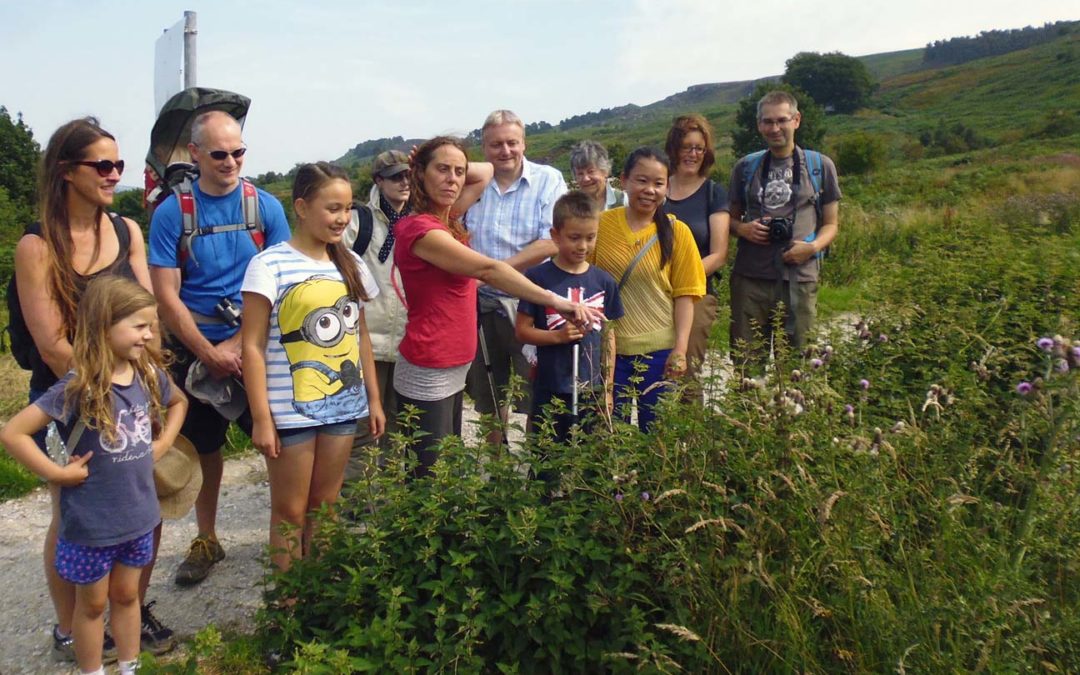 A Wild Plant Food Forage event, organised by the Friends of Ilkley Moor, took place on August 23rd on Ilkley Moor, led by Tracy Gray, Project Officer for the FoIM. The event was organised so that people could discover the many edible and medicinal plants which can be found on Ilkley Moor. The group discovered that many of the common plants around them are powerful medicines and also provide great nutrition.
A Wild Plant Food Forage event, organised by the Friends of Ilkley Moor, took place on August 23rd on Ilkley Moor, led by Tracy Gray, Project Officer for the FoIM. The event was organised so that people could discover the many edible and medicinal plants which can be found on Ilkley Moor. The group discovered that many of the common plants around them are powerful medicines and also provide great nutrition.
It was a gloriously sunny day and the group slowly ambled along the lower slopes of the moor, climbed up to the upper tarn and back down, across the middle slopes of the moor, stopping often to learn about the plants around them. People learned of the berries and nuts they could eat: bilberry, blackberry, raspberry, elderberry, hazel and sweet chestnut. They learned that in the past people used to use acorns to make an edible flour and that heather flowers were used to make beer, as is still practised in some parts of Scotland today. That bracken was collected and used as animal bedding and for thatching and that in the far east young bracken shoots were candied and eaten. That the different vibrant colours of lichens were collected for dyes and that they are also still used to dye some woollen clothing in parts of Scotland. That hazel and willow trees were coppiced and the poles used for constructing shelters and fences. That the fibres of nettle were used to make cloth and paper. That the sap from birch trees can be collected to make wine.
They learned about the medicinal properties of yarrow, nettle, hawthorn and meadowsweet and how modern day aspirin is derived from meadowsweet. They also learned how the inner bark of the white willow was also used as pain relief. People discovered the importance of Sphagnum moss during World War 2 and how on Friday afternoons school children were sent to the moor to collect it so it could be sent to the war medical camps and applied to soldiers wounds. Sphagnum moss is very absorbent and when applied to wounds it soaks up the blood and infection and its naturally antiseptic properties helped heal these wounds.
People were taught how modern medicine, even though it arrives to us now as a little pill, actually starts out as a plant. The active medicinal properties of these are then isolated and often synthesised to produce modern medicine. And that the wisdom of herbal medicine is once again being increasingly practiced by people, as people once again start understanding the healing properties of plants; but in its whole non synthesised form.
Everyone had a great time on the event and look forward to attending more events from this year’s events and learning programme.
The events programme and heritage walks can be downloaded from the FOIM website www.ilkleymoor.org or collected from Ilkley Information Centre and shops in the Town.
From Tracy Gray FOIM Project Officer. For further information contact Tracy Gray FOIM Project Officer on 07780535860

